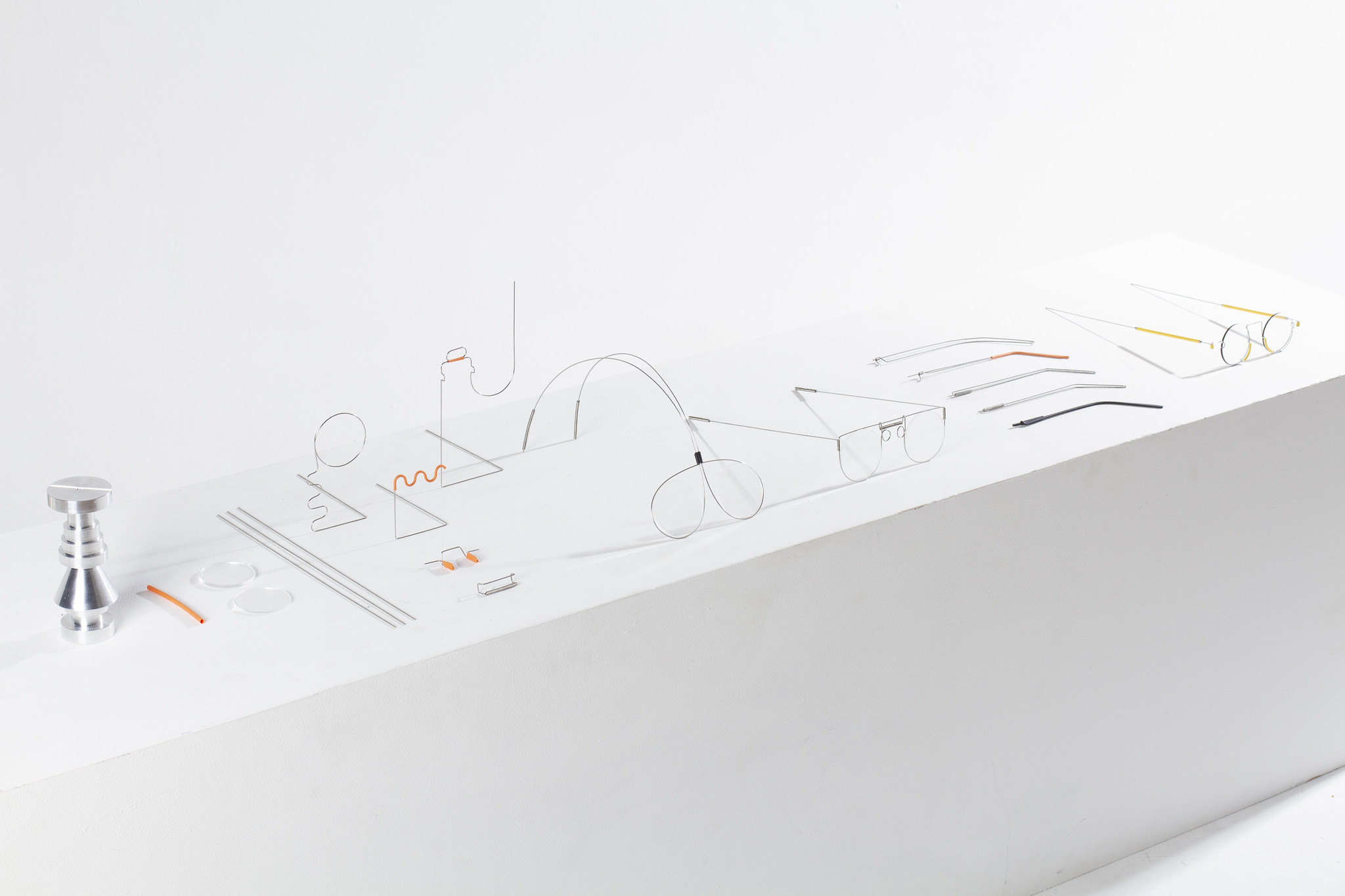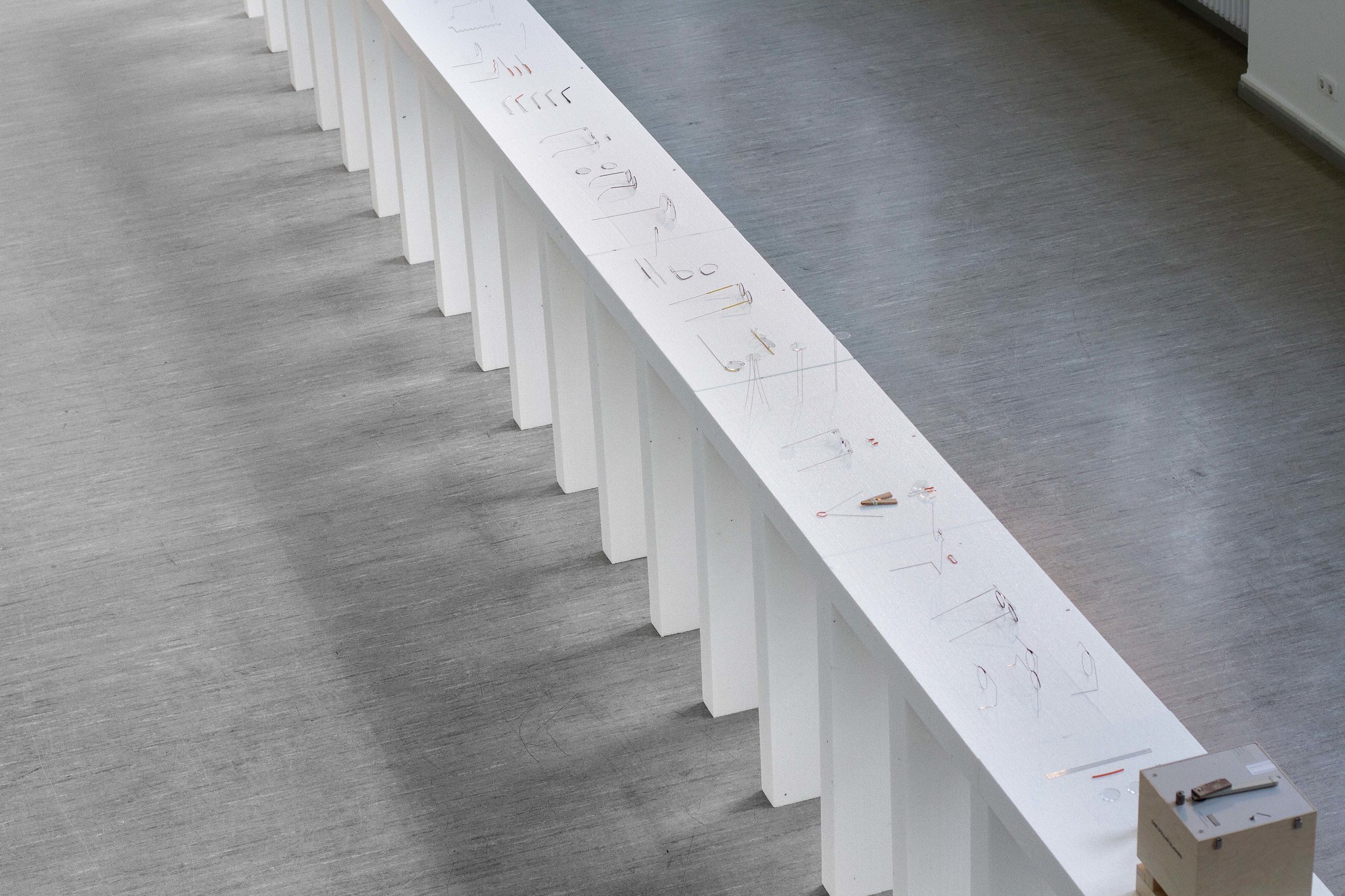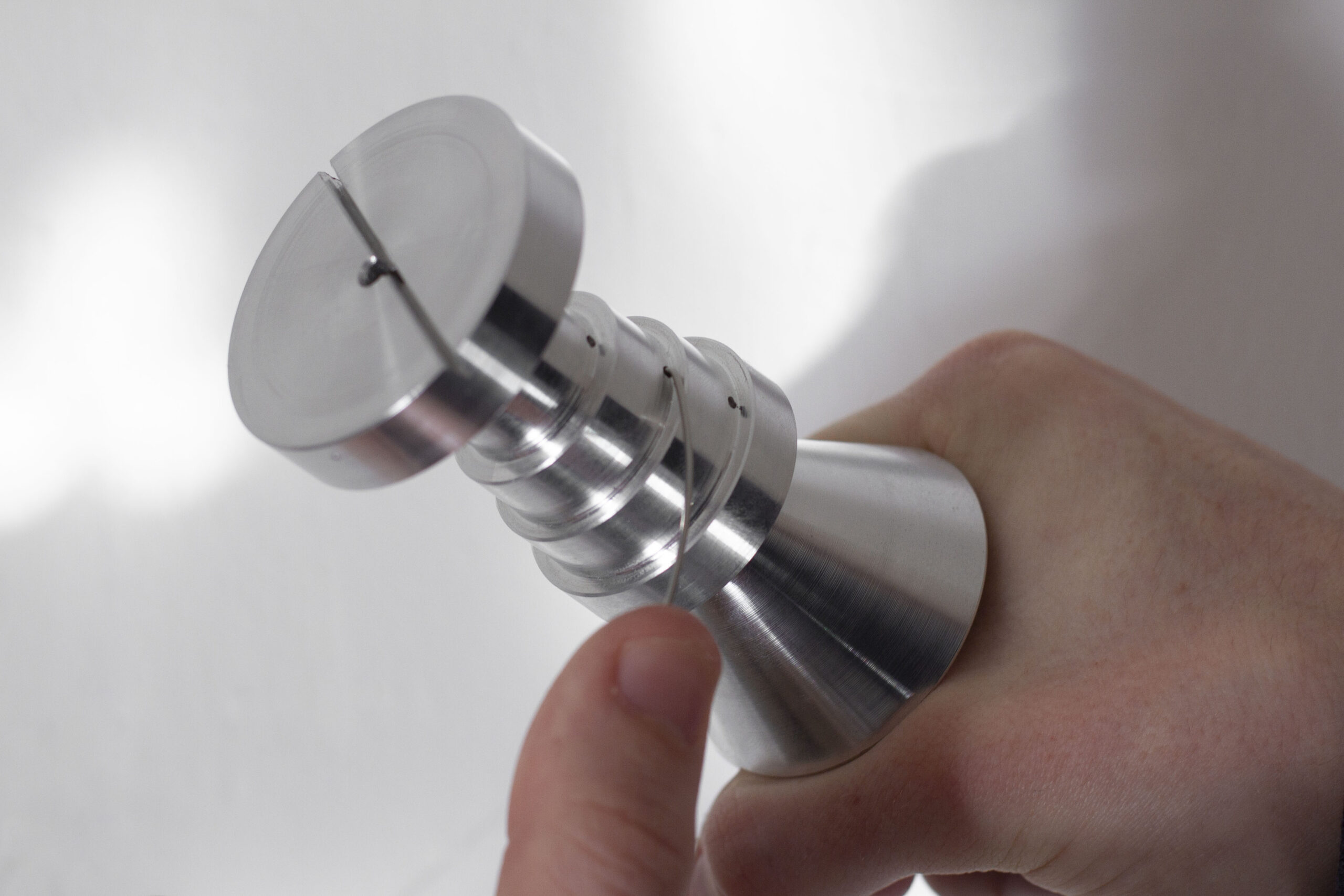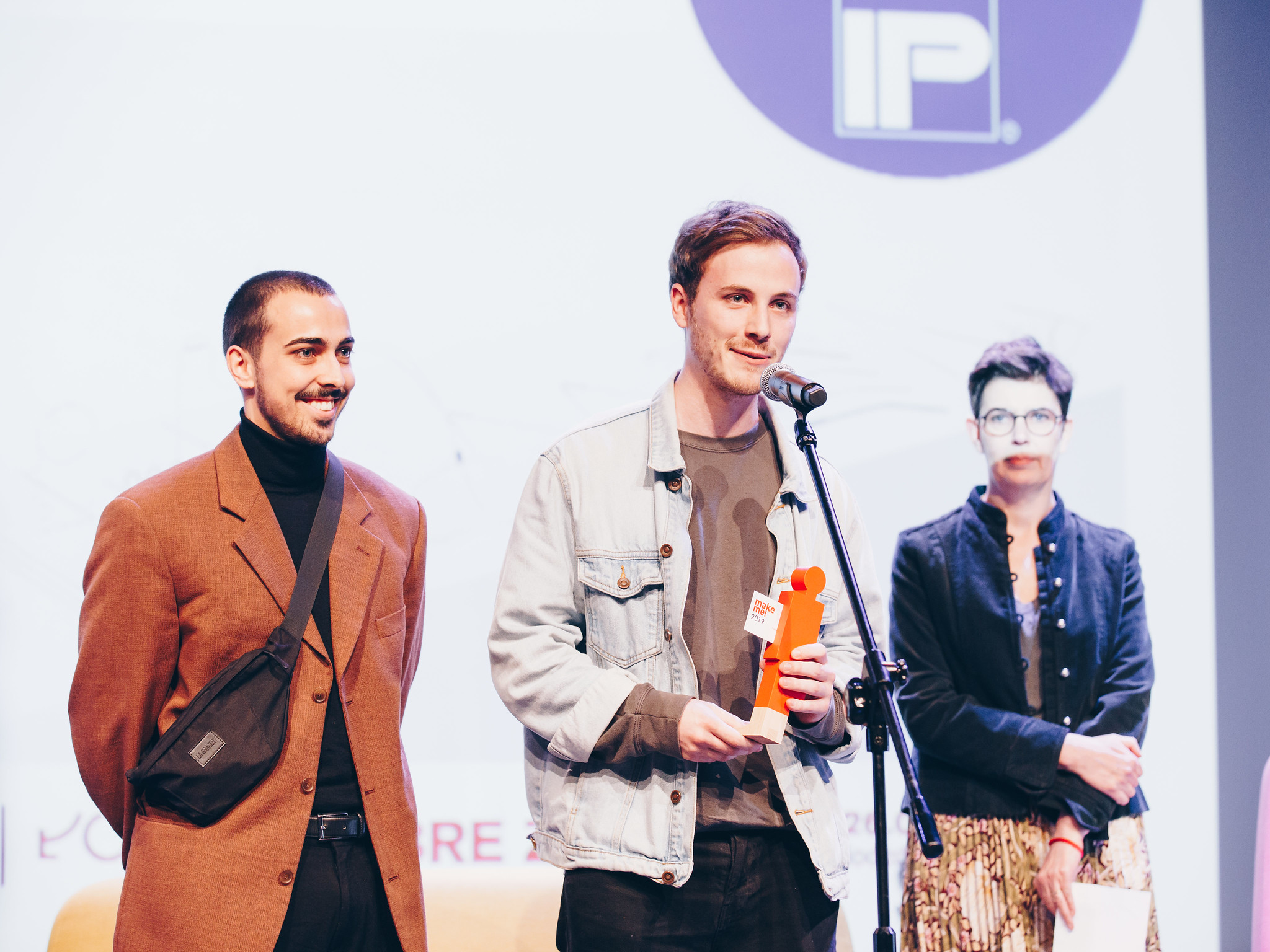“Even small changes can have a big impact”- interview with the winners of the make me! 2019 contest
With Patrick Henry Nagel and Nils Körner from Haus Otto we talk about the “The One Dollar Glasses” project, a problem affecting 150 million people and what young designers should pay attention to.
Once again, we would like to congratulate you on winning in the make me! contest with “The One Dollar Glasses” project. The theme of this year’s Lodz Design Festival was „good life”. What does it mean for you? Do you believe a good life can be designed?
Patrick: For me personally, it is being around good people, doing something you are passionate about and of course good food.
Nils: I think it very much depends on how one’s definition of design is. Everything around us somebody thought of and therefore one could argue was „designed“. Starting with the first humans creating tools to hunt or clothes to keep warm. So I think it has a massive impact on our lives and the way we live. But a good life definitely goes beyond material things.
Awarding prizes in the make me! contest is a key element of Lodz Design Festival. This year, two of them were given to you: 50 000 PLN PARADYŻ AWARD, sponsored by the Festival Patron, Ceramika Paradyż, and a special award 5 000 PLN funded by the festival’s sponsor, Interprint. Do you have an idea on what would like to spend this money?
We are still amazed and incredibly honoured to win these prizes. The money will be a great help to realize future projects.
On a global scale, how real is the problem of lack of access to prescription glasses?
Worldwide more than 150 million people need a pair of glasses, but cannot afford it. These people cannot work and many young people are not able to go to school due to uncorrected eyesight.

The One Dollar Glasses, design: Nils Körner, Patrick Henry Nagel /from designer’s archive

The One Dollar Glasses, design: Nils Körner, Patrick Henry Nagel /from designer’s archive

The One Dollar Glasses, design: Nils Körner, Patrick Henry Nagel /from designer’s archive
What can we do to contribute to improvement of this situation in a real way?
There are many ways to get involved starting from doing volunteering work, donation, bringing awareness to the organization or finding other ways to get involved. Even small changes can have a big impact.
Tell us more about the process of designing your project. Why did you focus on this issue particularly?
We loved the idea how with simple and low cost materials a big change can be made for a global problem. So after a long research phase and regular contact with the Non Profit organization Ein Dollar Brille e.V. we started to come up with ideas and concepts. One of the points we especially focused on is individuality, allowing people to express themselves and their unique personality by the glasses they wear.
The purpose of your project was to analyse the possibilities and limitations of the production process of materials, such as spring steel, heat-shrink tubes and lenses available for less than a dollar. Could you explain to us the results of this research?
We aimed to create a broad spectrum of solutions by examining the potential in eight different categories. Instead of designing one type of glasses, the idea was to create a modular system so that many different glasses can be combined, kind of like a set of legos.
Could you tell us how does your cooperation with EinDollarBrille organization look like?
In the beginning of the project we got all the necessary information about the current situation and were provided with the necessary bending tools plus a bending course by the Non-Profit-Organization. After that it was up to us to come up with ideas and explore the possibilities from a designer point of view. Now that we had a look at all the different possibilities, we are going deeper into the material to see how some of our ideas could be implemented to the organization and are therefore in contact with the founder Martin Aufmuth.
What’s next for Haus Otto, what are your plans for the next, let’s say, five years?
We are still at university so one of our next projects will be our diplomas. After that we want to continue working together as Haus Otto, collaborating with companies and building up our studio.
What should young designers pay attention to the most? What kind of advice could you give them?
Focus on things that matter to you! You need a certain excitement and passion for the project you are working on to obtain a good result.
Lastly, we have a kind of a questionnaire prepared for you:
If you could be the designer of any project in the history of mankind, what would it be?
Patrick: The first automobile
Nils: I would have loved to be part of the Bauhaus movement.
What do you think will be the next breakthrough technological invention that you will live long enough to see? What are you most looking forward to?
Patrick: I think through digitalization the speed of technology and innovation has moved so rapidly that it is almost impossible to imagine how the world will look like in let’s say 50 years. But I think everything around finding affordable and environmentally friendly solutions and making technology accessible for everyone are things I’m looking forward to.
Nils: Global warming is a big problem these days, I hope the next breakthrough technological invention will help mankind to save our planet and live in harmony.
Who is the most important designer these days?
Patrick: This is a very difficult question, as there are too many great designers out there to pick only one.
Nils: There are a lot of great designers these days, especially in the younger generation. I’m looking forward to working with them.
Can you name the most interesting designers in Germany?
Patrick: Werner Aisslinger or Konstantin Gricic are working on very interesting projects.
Nils: Anima Ona, Finn Meier, Sense Trans Techno, Leonie Schimmeyer.
What should be on the best-designed pizza?
Patrick: Definitely a lot of cheese.
Nils: It should be simple, maybe a margherita with some vegetables.
What book worth recommending did you read lately?
Patrick: “Change By Design” by Tim Brown.
Nils: The Dystopian Novel “Brave New World” by Aldous Huxley from 1932.
Your three favorite TV series are:
Patrick: “Ted Talks”, “The Office” (UK version), “Game of Thrones”.
Nils: I don’t watch that much TV but I really like utopian and dystopian movies about the future and also documentations about science and nature. Recommended Movies: “Clockwork Orange”, “Blue Velvet”, “Space Odyssey“.
Favorite movie scene:
Patrick: The final scene of Cloud Atlas.
Nils: Intro in Clockwork Orange.
You have a one way ticket. Where would you go?
Patrick: Suffolk UK.
Nils: To the Tuscany Hills.
The Rolling Stones or The Beatles?
Patrick: The Rolling Stones.
Nils: The Beatles.
Rihanna or Beyonce?
Patrick: Beyonce.
Nils: Neither of them.
Star Wars or Star Trek?
Patrick: Star Wars.
Nils: Star Wars.
Superman or Batman?
Patrick: Batman.
Nils: Superman.
Cats or dogs?
Patrick: Cats.
Nils: Dogs.
Thanks for the interesting conversation!

Nils Körner, Patrick Henry Nagel / from designer’s archive

make me! 2019 award gala / from ŁDF archive

Nils Körner, Patrick Henry Nagel / photo Aleksandra Pawłowska
make me! 2019
The make me! competition is a key element of Łódź Design Festival. It has accompanied the festival since its second edition and has grown into one of the most important international competitions for young designers. However, designers are its not only target – the competition is also open to art and design students and graduates aged 20–35 years. Projects in the area of industrial design, graphics, architecture or fashion can be submitted. The technique and used materials can be freely chosen, starting from ceramics, through glass and wood, and ending with plywood and other materials. Designers from all over the world, e.g. from Egypt, North Korea, Hong Kong, Russia, Canada and Argentina, have entered the competition. The jury has selected 22 projects out of 148 submitted propositions, which were presented at the post-competition exhibition organised as part of Łódź Design Festival.
Haus Otto is a design studio that works in the field of space and product design. Patrick Henry Nagel, born in 1993 and Nils Körner, born in 1992, met at the University of Art and Design in Stuttgart. After Nils’ guest studies at the University of Art and Design in Helsinki and Patrick’s studies at San José State University in California, they both started their cooperation in the field of economy and culture as well as on self-initiated projects. The studio has a hands-on, collaborative approach. Each project, apart from its challenging assumptions, offers simple solutions, which often contain a narrative aspect.
The awarded “One Dollar Glasses” project playfully explores the possibilities of using wire in the production of glasses. Currently, there are over 150 mln people who need glasses but do not have access or financial means. By educating people in the developing countries and providing them with right wire bending tools we allow them to create their own glasses. The aim of the project was to explore the possibilities and limitations of the production system and materials such as spring steel, heat shrinking tubes and lenses, which are available for less than a dollar. The project also wanted to create a wide spectrum of solutions and is based on EinDollarBrille e.V., a non-profit organisation.
– The jury was unanimous. It does not often happen that selecting the main prize is so easy and obvious at the first voting. We awarded social sensitivity and the insight of the process, conducted in a very thorough and reliable way, the execution and the aesthetic qualities. Those jury members who wore glasses thought they would rather change them to the ones they assessed – claimed Agnieszka Jacobson-Cielecka, programme director at School Of Form and a representative of the jury. This year’s jury consisted of Czesława Frejlich, Agata Kulik-Pomorska and Paweł Pomorski, Mariusz Włodarczyk, Michał Piernikowski and Maurizio Burrato. The designers duo also received a special prize of PLN 5,000, funded by Interprint, a Łódź Design Festival sponsor. – This year, we decided to award the main prize to a marvellous idea, which, as we believe, helps those who need it most. It helps the people who were not as lucky as we are, since they were born somewhere else in the world, under completely different economic conditions – justified Sylwia Lasota, Sales and Marketing Head, Interprint.






